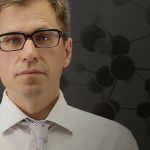
Canadian Research series
This video series of interviews features Canadian scientists who work on solutions for Duchenne muscular dystrophy (DMD). We wish to connect you – the DMD community – with these scientists. You’ll be delighted to learn about their motivation and dedication to this cause. In turn, they appreciate knowing more about our community, because we’re the people who are impacted by their discoveries. We hope that the interviews will help to foster an understanding of scientific concepts that aren’t always easy to grasp.
CRISPR/Cas9 Research
Right now, Jacques P. Tremblay is doing things he couldn’t dream of five years ago… This is the reason why is not retiring yet. He is hoping to find a treatment for DMD before retirement. We wish to connect you, the DMD community, with the professors. You will be delighted to know their deepest motivation and devotion. They love to know your face; you are the people that will be impacted by their discovery. We hope this video will be a good medium for understanding how CRISPR/Cas9 technology work, as related to DMD.
Jacques P. Tremblay “The main message of hope that I can deliver to families is that research is progressing fantastically. Right now, I’m doing things I couldn’t dream of doing five years ago. This is why I’m not retiring yet.”
About Professor Jacques P. Tremblay
Jacques P. Tremblay received a B.Sc. in Biochemistry from McGill University in 1970, and a Ph.D. in Neuroscience from UCSD (University of California in San Diego) in 1974. From 1975 to 1976, he was a postdoctoral fellow at the Laboratory of Neurobiology of l’Hôpital de L’Enfant-Jésus. His group is currently using CRISPR/Cas9 technology to correct the dystrophin gene, creating an additional deletion to produce a hybrid exon of the dystrophy gene, which not only restores the expression of dystrophin but also produces dystrophin with a regular structure.
What is CRISPR/Cas9 technology?
Jacques P. Tremblay: CRISPR/cas9 is a technology that was first identified in bacteria. Bacteria were using this to cut up the genome of the viruses that were infecting them. About five years ago, researchers noticed that this technology allows, not only to cut up virus genes but that it can also cut genes in animals, plants and especially in humans.
How does CRISPR/Cas9 technology work, as relates to DMD?
Jacques P. Tremblay: As for now, for Duchenne muscular dystrophy, we primarily use an approach that aims to cut at one or two locations to take off a part of the gene sequence. This can be surprising, but it can allow restoring expression of dystrophin, the missing protein. So, in the long run, what we hope to do with CRISPR/Cas9 technology is to develop a gene therapy pour children affected by Duchenne muscular dystrophy.
When are the clinical trials for patients?
Jacques P. Tremblay: I’m an optimist, and I think we can start clinical trials for Duchenne muscular dystrophy, in about three or four years. This will be a clinical trial that we’ll do on ten patients. And will need to have a clinical trial on a more significant group of patients, before it becomes available.
More information about Professor Jacques P. Tremblay: Centre de recherche du CHU de Québec
Connect to our Canadian Research Series
An effective way to be informed and to receive our videos right out of the box is to sign up here for our newsletter.



